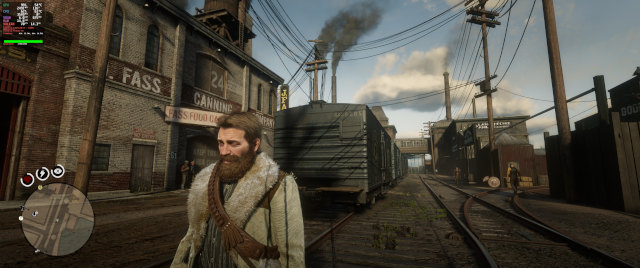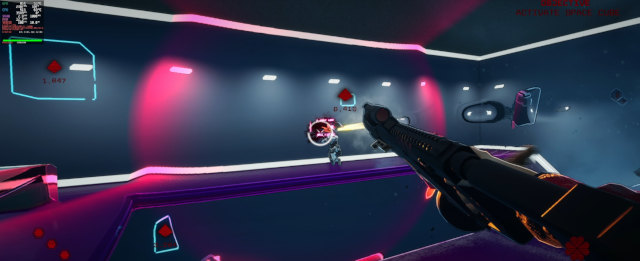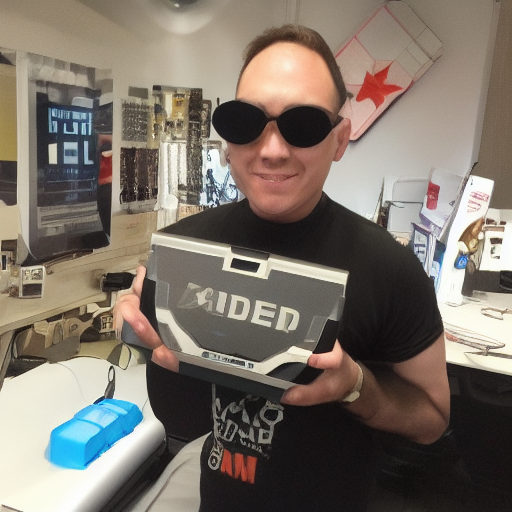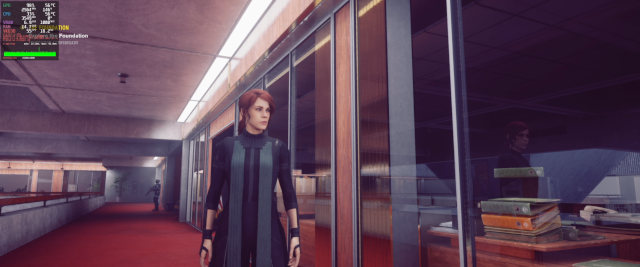This is hugely unexciting. I replaced my Nvidia GTX 970 with a lower end GPU that was launched two years ago. Isn’t that boring?
It is only in the last two or three years that I have really felt like I was limping along with my old GPU. I feel like AMD’s FSR and Proton-GE’s ability to enable it in nearly any game was what let me get by for at least this last year.

I hit my first game that wouldn’t run properly just a few months ago. DEATHLOOP was included in Humble Choice, and after finishing Prey, I was excited about trying DEATHLOOP. My 4 gigabytes of VRAM just wasn’t enough, and the game was barely able to manage 15 frames per second.
- My New Radeon 6700 XT — Two Months Later
- AMD Radeon vs. Nvidia RTX on Linux
- My New Monitor: The Gigabyte G34WQC A Ultrawide at patshead.com
- Putting a Ryzen 5700X in My B350-Plus Motherboard Was a Good Idea!
Everybody says AMD GPUs are fantastic on Linux
I don’t believe them. The last time I used an AMD GPU was shortly after AMD had acquired ATI. I had an ATI X1400 in Dell laptop running Linux. AMD’s proprietary Linux drivers were atrocious, but they promised things would get better. They didn’t get better in the years that I owned that laptop. Every computer I have owned since has had an Nvidia GPU, except for my current 2-in-1 laptop with integrated graphics.
I am running Ubuntu 22.04 LTS. If I swap my GTX 970 for an RTX 4090, everything will just work using the drivers I am already using that were installed via apt. I wouldn’t have to make any configuration changes.
If I bought an AMD 7900 XT, and that is what I very nearly did, this wouldn’t be the case. The kernel that ships with Ubuntu 22.04 is too old, and I believe I would also need all sorts of newer libraries that just don’t ship with the current Ubuntu LTS.
It is fantastic that we can run AMD cards with open source drivers and libraries. It is a huge bummer that the support is interwoven so tightly into the Linux distribution.
- AMD Radeon vs. Nvidia RTX on Linux
- My New Monitor: The Gigabyte G34WQC A Ultrawide at patshead.com
- MSI Radeon RX 6700 XT at Amazon
What has been stopping me from upgrading?!
I am sure are aware of how expensive video cards have been over the last several years. I wanted to upgrade two years ago, but I just couldn’t stomach paying $1,000 for a GPU that is only twice as fast as the GPU I bought at its launch in 2014.
GPU prices have dropped a lot, but I had another problem. My old and still surprisingly nice QNIX QX2710 monitors require dual-link DVI connections. You just can’t buy a modern video card with a DVI port. That’s another expense, and it is a bummer that the upgrade I wound up making was more sideways that it was upwards.
I was hoping that the prices on 38” ultrawide 3840x1600 monitors would drop more before I needed to upgrade. They didn’t, so I wound up buying a Gigabyte G34WQC 34” ultrawide 3440x1440 monitor.
I figured I would get the monitor upgrade out of the way first. Then I could wait a few months to see what happens. Maybe there would be an AMD 7800 XT available by then that would be a better fit for me. That didn’t work out. I made it five days before ordering a new GPU.
- My New Monitor: The Gigabyte G34WQC A Ultrawide at patshead.com
How did I land on the AMD 6700 XT?
I really did have my heart set on the AMD 7900 XT. I have more than a slight concern that I would have trouble fitting that card in my case, and I wasn’t excited about jumping off the Ubuntu LTS train onto the other train where I would be dealing with an operating system upgrade every six months.
NOTE: This shouldn’t have been a big concern. There is a PPA with nightly builds of Mesa 23. I have been trying it out with my 6700 XT, and the updated drivers nearly doubled frame rates in Control with ray tracing enabled.
Not only that, but it doesn’t sound like full support for the 7900 XT exists anywhere on Linux. It seems that there is no overclocking support, and we don’t have hardware AV1 encoding yet. I bet Ubuntu will be six months behind everyone else on that front.

There were some good deals this week on both 6800 XT and 6900 XT cards. I want to say they were at $580 and $650 respectively. Both have 16 GB of VRAM, and the price increase was close to proportional with the increase in performance. Either sounded like a good value, but I was definitely planning on going with the 6900 XT.
So how did I wind up with the 6700 XT? The 6700 XT was $520 when I started shopping. It made no sense to buy such a slow card with only 12 GB of VRAM while only saving $50. That would have been terrible.
Then a 6700 XT went on sale for $370. That easily made it competitive on the price-to-performance graph. Then I saw that the 6700 XT is about 1.5” shorter than the 6900 XT. That was enough to get me to place my order immediately.
I saved money. The RX 6700 XT should be more than enough GPU for my needs. I won’t have to upgrade my Linux distro every six month. Best of all, I won’t have to hope the card fits in my case without the eight 3.5” hard drive bays getting in the way. Less money and less work seemed smart to me!
- My New Monitor: The Gigabyte G34WQC A Ultrawide at patshead.com
- AMD Radeon vs. Nvidia RTX on Linux
- MSI Radeon RX 6700 XT at Amazon
Will the RX 6700 XT really be enough GPU for me?
I sure hope so! I decided last year that my minimum viable upgrade would be an Nvidia RTX 3070. I made that decision when an RTX 3070 would cost something like $1,200. They’re down to $550 or so today.
The 6700 XT is comparable enough. The 6700 XT does better in some games, while the RTX 3070 does better in others. The 6700 XT does support ray tracing, but AMD cards always do a lot worse with ray tracing enabled. Even so, the 6700 XT cost nearly $200 less, so it seems like a good value.
I don’t expect that the 6700 XT will keep me going for eight years like the GTX 970 did. If it keeps me going until I can get a 7900 XT on sale for $600 or so, then I will be really pleased.
Things were a mess during the first few hours with the 6700 XT!
I swapped in my new 850-watt power supply, removed my GTX 970, and installed my MSI RX 6700 XT. I just turned on the computer, opened Steam, and fired up Borderlands 3. I had working drivers, variable refresh rate Freesync was working, and the game was running so well. I wound up turning the knob up to Badass, which is one click above Ultra, and I set FSR at 75% resolution for my 3440x1440 monitor. I wandered around, and my frame rates were usually between 80 and 100. Running the benchmark landed at about 77 frames per second.
Then I fired up Davinci Resolve, and learned that I had no OpenCL support. Don’t do what I did. I followed the advice of using AMD’s own amdgpu-install to install their graphics, ROCm, and OpenCL drivers. That got Resolve working, but it was really slow. It also obliterated my frame rates in the games I had already tested.

I ran amdgpu-uninstall to clear out all the damage I had done. Once I verified that gaming was fast again, I followed this advice and ran apt install rocm-opencl-runtime. You do have to need the amdgpu-install Debian package installed for this to work. It will install AMD’s OpenCL libraries alongside your existing open-source drivers.
I also need OBS Studio for my workflow. I was surprised that it offered AV1 as an option for encoding with the GPU. I tried it, and it left me with a zero-byte file. Then I tried h.264, and that worked great. That is all I need!
- My New Monitor: The Gigabyte G34WQC A Ultrawide at patshead.com
- MSI Radeon RX 6700 XT at Amazon
Davinci Resolve on Linux is missing features without CUDA
I messed around a bit in an old project to make sure Resolve will still be able to get the job done. I set up a Magic Mask to cut myself out of a short clip, and that seemed to work well. Scrubbing around the timeline seems fine.
The trouble came in when I decided to export a video. My own 2160p YouTube settings use h.265 at something like 120 megabits per second. The options for h.264 and h.265 are gone.
I am left with an extremely simplified option labeled MPEG4. I can’t specify a bitrate. I can only chose between good, better, or best quality.
I don’t know exactly what I will do next time I have to upload to YouTube. I am expecting to have to use DNxHR.
Was AMD a good choice?
I can’t say for certain. The AMD 6700 XT has only been in my computer for one full day. As far as gaming goes, I will definitely say it was a good value. As long as you aren’t using ray tracing, and we will talk about that very soon, the 6700 XT is a bit faster and has more VRAM than an RTX 3070. Even better, you can get a 6900 XT with 16 GB of VRAM for not much more than the price of that RTX 3070 with only 8 GB of VRAM.

All the AMD cards fall behind when it comes to ray tracing. The 7900 XTX costs less than an RTX 4080, and the 7900 XTX performance sits somewhere between the RTX 4080 and RTX 4090. Until you turn ray tracing on. That’s when the AMD cards fall way behind.
I will play some games, try out the bleeding-edge Mesa libraries, and then report back on how things are going!
Ray tracing with an RX 6700 on Linux
I wanted to play Control with ray tracing. With the open-source driver, the option isn’t available. During the short time when I ran AMD’s driver using amdgpu-install, I was able to turn on ray tracing in Control, but the game was super slow and jittery. It didn’t matter if ray tracing was turned on. That driver was just terrible.

I also wanted to play Severed Steel with ray tracing enabled. You don’t turn ray tracing on in the game. It either launches with DX12, DX12 with ray tracing, or DX11. At first I couldn’t tell the difference. There are a lot of environmental reflections baked into the reflective floors, walls, and ceilings.
Once I figured out the difference, it was easy to see that ray tracing was working just fine. First I noticed the sniper’s laser scopes were reflecting on the ceiling and floor. Then I noticed the streaks of glowing bullets flying through the air were being reflected everywhere.
I also tried turning ray tracing on in DEATHLOOP. It was not an option.
I am a little disappointed here, but I don’t feel let down. I didn’t expect to be able to use ray tracing in many games with the $370 GPU that I chose. Ray tracing works in Severed Steel, and the fact that it works in other games with AMD’s driver bodes well for the future.
NOTE: To enable ray tracing with Ubuntu’s Mesa libraries you have to add RADV_PERFTEST=rt to your game’s startup options. It might look like this in Steam:
1
| |
This upgrade was inspired by DEATHLOOP
DEATHLOOP ran like a slideshow on my GTX 970, so I didn’t get to play it. I finished the first mission last night, and it was buttery smooth. I don’t know if it is a good game yet, but I look forward to finding out this week!
I turned almost everything up to the max, but I enabled some of the FSR-related settings to get some extra performance. The game looks fantastic, and it is usually staying above 100 frames per second.
UPDATE: DEATHLOOP does not run great. As soon as I got to the town, my FPS dropped below 60. Even turning the settings down rather low and setting a much lower resolution drops me into the 60-FPS range all the time. I asked Google about this, and I found a bunch of people on Reddit wondering why they can’t stay above 60 FPS with their Ryzen 5950X and Nvidia RTX 3090 machines.
Conclusion
I think I made a good choice, but I think the 7900 XT would have also been great. I am already enjoying buttery, smooth games with nearly maxed out settings. I expect I would be underutilizing a 7900 XT for at least a couple of years.
FidelityFX Super Resolution (FSR) got me a few extra years out of my GTX 970, and I think I am going to continue to rely on it with the 6700 XT. There just isn’t quite enough grunt here to get to 144 frames per second with Ultra or Badass settings at 3440x1440, and I think that is alright.
I was hopeful that my GPU upgrade would get me to 100 Hz or 144 Hz in most games with the settings maxed out without having to enable FSR. I was also expecting to pay more than $1,000 for that upgrade, though, so I can’t complain about reaching that goal with a light sprinkling of FSR enabled.
- My New Radeon 6700 XT — Two Months Later
- AMD Radeon vs. Nvidia RTX on Linux
- My New Monitor: The Gigabyte G34WQC A Ultrawide at patshead.com
- Putting a Ryzen 5700X in My B350-Plus Motherboard Was a Good Idea!
- MSI Radeon RX 6700 XT at Amazon
- XFX Speedster MERC319 6900 XT at Amazon
- XFX Speedster MERC310 7900 XT at Amazon
- Enermax Marblebron 850-watt PSU at Amazon